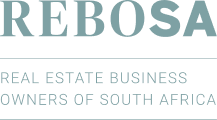Slowing House Price Growth ‘stalls’ for Now
Category Market News
The FNB House Price Index for April 2016 rose by 6.4% year-on-year. This is slightly faster than the revised 6.3% rate recorded for March, “stalling” a prior gradual slowing trend since the 6.9% “high” reached in October 2015, says John Loos, household and property sector strategist at FNB Home Loans.
“The mild acceleration in April is not significant, but does ‘stall’ the trend of slowing to lower single-digit price growth, which we would expect on the back of rising interest rates,” Loos says.
“The mild acceleration in April is not significant, but does ‘stall’ the trend of slowing to lower single-digit price growth, which we would expect on the back of rising interest rates,” he says.
In real terms, Loos says when adjusting for Consumer Price Index (CPI) inflation, the rate of house price growth “hugs” the zero level, having recorded zero in March - the result of a combination of 6.3% average house price inflation and 6.3% CPI inflation.
Zero percent real house price inflation would suggest a market still very well balanced between supply and demand, he says.
The average price of homes transacted in April was R1 061 075.
However, Loos says valuers continue to point to a weakening demand-supply balance, and if this trend continues, it would “probably ultimately imply a move to slower house price inflation”.
“Ongoing interest rate hikes, with the most recent one having been a 25 basis point rise in March, continue to take the market away from the speculator,” he says.
In order to create a “speculator’s paradise” in residential property, Loos says it is important to have price growth at a percentage significantly faster than the percentage of the annual interest charged on a mortgage loan.
“Such an environment would give rise to widespread use of cheap credit to buy and sell properties in a relatively short space of time and make big capital gains - 2004-5 was such a speculators’ paradise.
“For a healthy market with low levels of speculation, we believe that this real rate should remain positive. Indeed, that was again the case in April, where the Real Alternative Prime Rate was 4.08%, having risen in recent times on the back of further interest rate hiking along with slowing house price inflation.”
Thus, Loos says they believe the SARB’s monetary policy stance to be “appropriate” from a residential market health point of view.
In terms of the property market outlook, Loos notes that with interest rates having risen further early this year, and the inflation rate in the bond instalment value on the average priced home rising in double digits, it is likely that residential demand will slow further in the near term - with wage inflation unlikely to have kept up.
“Slower average house price inflation later in the year thus still remains a likelihood, we believe, despite the recent ‘stickiness’ at near to 6%,” he says.
Author: John Loos







